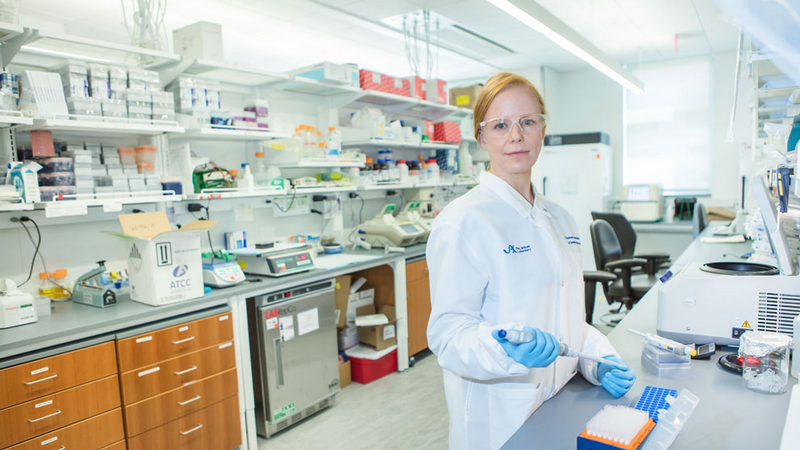Christine Beck in her laboratory at The Jackson Laboratory for Genomic Medicine. JAX photo by Charles Carmarda.
A closer look at structural variants in the genome

Genomic structural variants (SVs), in which large segments of DNA are duplicated, deleted or inverted, are important contributors to genetic diversity and are increasingly associated with disease. Nonetheless, the exact SV mutagenesis mechanisms and associated effects are largely unknown. A recent Cell paper uses long-read DNA sequencing and other advanced genomics tools and methods to shed light on the subject.
Mutations in DNA come in different forms. Changes to even a single nucleotide—there’s a G where there should be a T, for example—can have significant consequences for an organism, especially if it is in an essential protein-coding gene. On the other hand, over the past two and a half decades researchers have discovered that even large genomic changes may have no apparent biological consequence or effect on protein function. Humans typically carry many structural variants (SVs) in their genomes, where large segments of DNA are duplicated, deleted, inverted or otherwise changed, with no apparently detrimental health effects.
If SVs form in the wrong genomic location, however, they do contribute to disease. But how do they form, and what potential effects or consequences can they have? A research team from Baylor College of Medicine (BCM) including co-first authors JAX Assistant Professor Christine R. Beck, Ph.D., and BCM Assistant Professor Claudia Carvalho, Ph.D., investigated known disease-causing SVs on chromosome 17 to investigate this question. They explored the molecular mechanisms underlying their formation as well as associated DNA changes. In a paper published inCell, “Megabase Length Hypermutation Accompanies Human Structural Variation at 17p11.2,” the researchers show that error-prone repair mechanisms contribute to SV genesis, and that long tracts of hypermutation are also generated in conjunction with the formation of SVs, and arein cis with (located near) the SV breakpoints.
For the study, genomes of individuals with Potocki-Lupski syndrome, in which a section of DNA is duplicated, and Smith-Magenis syndrome, in which DNA is deleted at the same location, were thoroughly examined. When significant DNA damage such as a double-strand break occurs, numerous possible DNA repair mechanisms can be deployed within the nucleus. Aberrant repair can lead to both large structural variants as well as base substitutions, but only certain kinds of replicative repair—known as break-induced replication (BIR) and microhomology mediated break-induced replication (MMBIR)—would be associated with DNA base-pair mutations introduced over long DNA segments near the original break. Such mutations occurring within nearby genes could potentially lead to additional traits in the individuals that harbor them.
A key element to the research was the use of both short- and long-read sequencing technologies. The long-read data provided new insight into structural variant structure around break points and resolved previously inaccessible sequences. The researchers were thereby able to determine the likely mechanisms of breakpoint formation as well as the structures generated by the genomic rearrangements.
While the findings presented in the paper are based on the specific syndromes studied, they are likely applicable to other diseases associated with SVs, including cancer.

